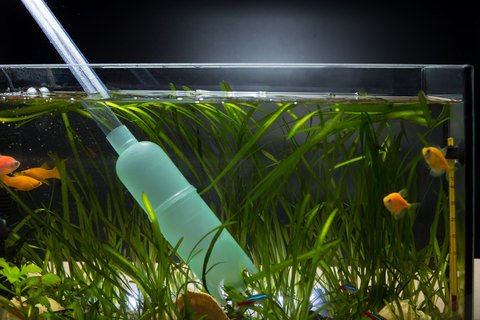| Back to Back Issues Page |
 |
|
The Goldfish Gazette, Issue #114 PH and water temperature differences June 29, 2023 |
Goldfish Care TipsA Free Monthly Resource For Goldfish Enthusiasts In This Issue Making sure that pH and water temperatures are close before moving fish or doing water changes has been the accepted way for decades, but is this based on science or myths? PH and Water Temperature Differences
I then thought about how the fish handle large differences in pH and water temperature when using the cut, pour, plop method to place them into their new environment. Many fish keeping websites, including my own, warn about the dangers of large pH and water temperature differences when making water changes or moving fish between containers. From the first early publications about Goldfish care, they have warned of the dangers of subjecting Goldfish to rapid changes in pH or water temperature. To quote the 1946 publication The Goldfish by George F Hervey and Jack Hems, "…it is unwise to subject a goldfish to a pH change of more than four-tenths on the scale per day, taken in two steps of two-tenths each", hence the often quoted safe maximum pH change of 0.2. The arguments against large water parameter changes seems logical as it is assumed fish can’t adapt suddenly to these changes. But is this argument valid? PH differencesI have always stated on the website that if fish are being moved to water with a higher pH, within reason, that the fish will be unaffected.As an example, my tap water has no detectable KH, so rapidly starts to drop from the 7.0 level from the tap once it is in the aquarium for a few days. When making 90% water changes, the fish appear completely unconcerned that their water is going from 6 to 7 in a matter minutes. Experiments done with hatchery-raised rainbow trout of moving them from 7.2 pH to water ranging from 8.5 to 10.00 had the following survival results:
Water Temperature DifferencesThe often-quoted maximum water temperature difference should be no more than 2oC (3.6oF).An experiment conducted on Red-Bellied Pacu, a largish tropical fish, subjected the fish to sudden temperature changes up and down from 28oC (82oF). (Yahiya et. al., 2020). The downward temperatures were 23oC (73oF), and 18oC (64oF). The upward temperatures were 33oC (91oF), and 38oC (100oF). The fish were netted and plopped into the different water temperatures. The temperature changes ranged from 5oC (9oF) and 10oC (18oF) up and down with no mortalities or lasting damage. I have been doing 90% water change experiments where the water has been 6oC (11oF) colder from the tap with the fish showing no ill effects, in fact the fish just keep looking for food as the aquarium refills. This is different from netting fish and dropping them into a different water temperature. There is a gradual change to the water temperature albeit quite rapid, but it does give the fish some time to adapt to the dropping temperature. ConclusionsFish that have been subjected to stress testing have not been Goldfish, specifically fancy Goldfish, but I think it is safe to conclude that we may be a little too precious regarding pH and water temperature differences.Fish in natural bodies of water are exposed to large differences in temperature and pH between the surface and the bottom which they constantly swim between. Water temperatures and pH can change rapidly once sunlight strikes our ponds. It is why we have to test the pH at the same time each day as the pH is always lower in the morning due to the build-up of carbon dioxide overnight. Because water changes always increase my pH, I am not too concerned about pH during water changes, but I won’t just drop fish into water that has a lower pH. I will limit my water change temperature differences to around 6oC (11oF), even though very experienced tropical fish keepers report no I’ll effects with an 11oC (20oF) difference. The more developed the variety, the more cautious I will be. Old habits are hard to break! Comments? Ideas? Feedback? I'd love to hear from you. Just reply to this e-zine and tell me what you think, or what topics you want to be covered. Next Month's Topic Are KH and GH important?www.facebook.com/aboutgoldfish |
| Back to Back Issues Page |
